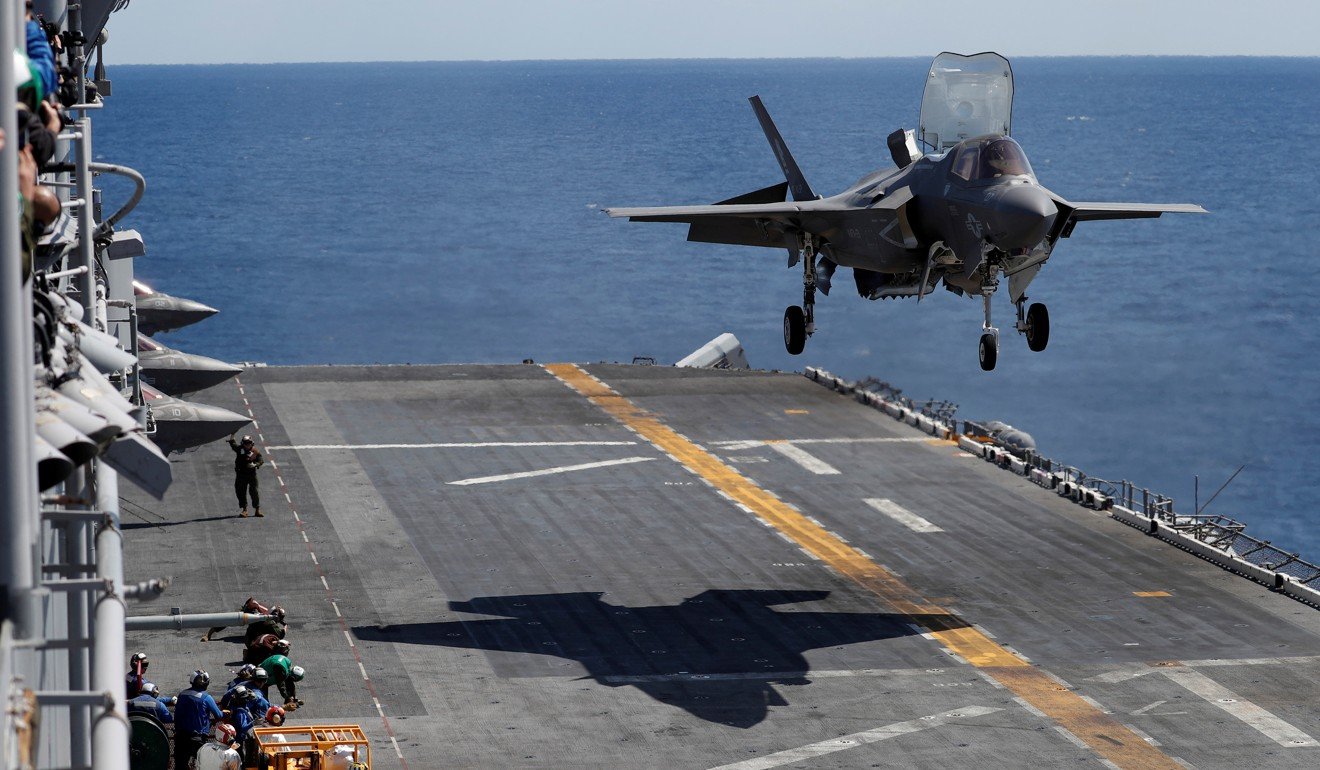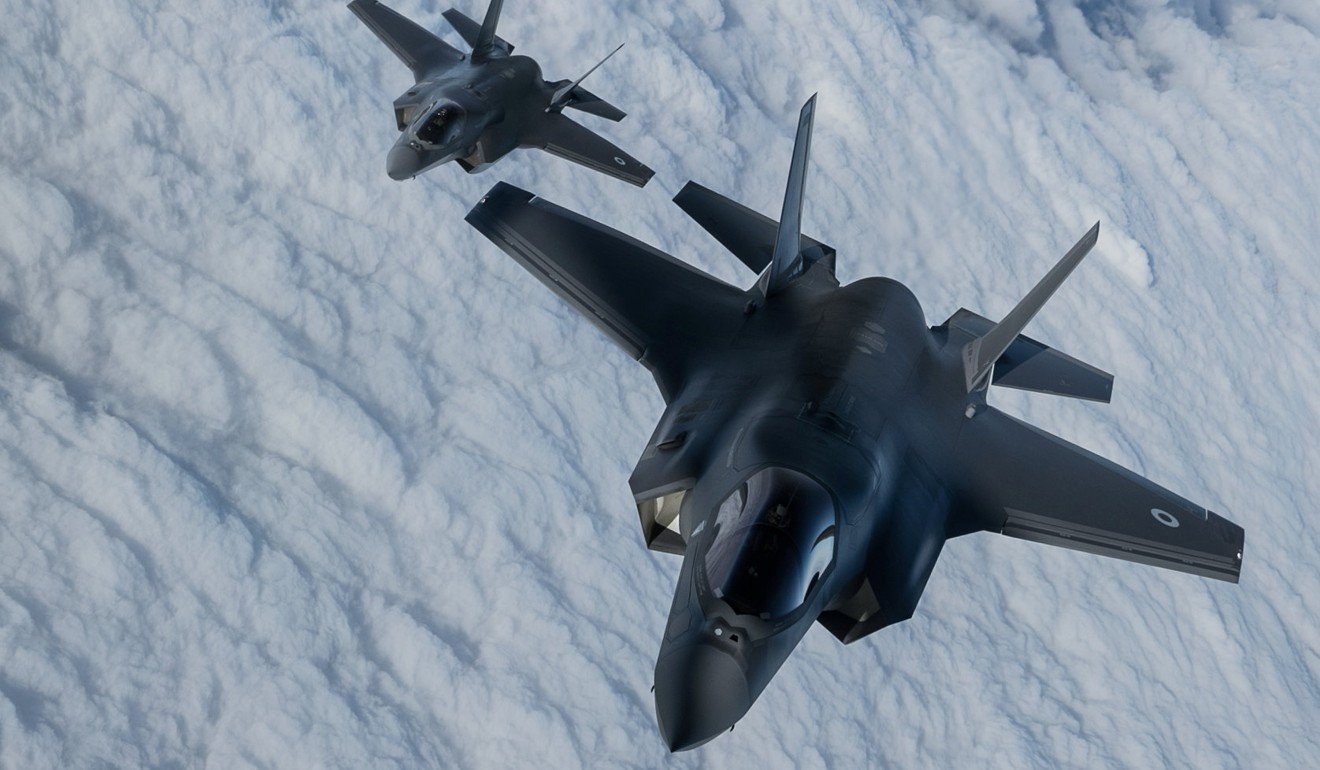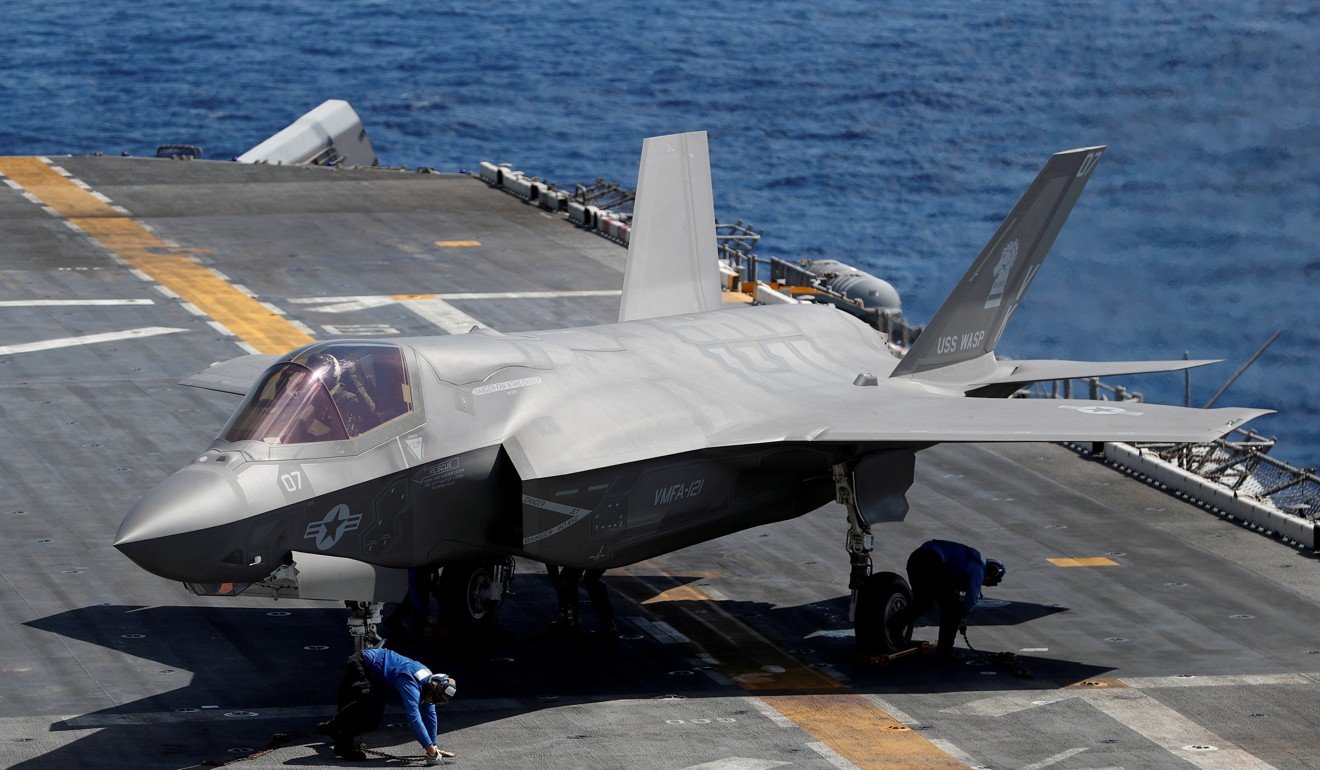
‘Useless and provocative’: Japan will deploy its first post-war aircraft carriers but it’s a deeply controversial move
- Critics say the ships will be too small to have significant strategic value, but will nevertheless antagonise China
- The decision to upgrade two Izumo-class helicopter carriers so they can launch fighter jets also risks breaching Japan’s pacifist constitution
Japan is getting its first aircraft carriers since the second world war and buying dozens of fighter jets under a new defence plan that was approved on Tuesday. But the move is a deeply controversial one.
Intended to counter China’s growing military power, the new five-year defence plan calls for the upgrade of two existing helicopter carriers so that they can launch fighters, and is the latest in a series of steps under Prime Minister Shinzo Abe to boost Japan’s military.
Abe’s government argues the efforts are necessary given growing defence challenges in the region, including tensions with North Korea, and particularly “strong concerns” about the expansion of China’s military footprint.
But critics argue the move shifts Tokyo further away from its commitment to strictly defensive capabilities under Japan’s post-World War II pacifist constitution, which restricts the country from possessing what are deemed to be highly offensive armaments.
Japan’s new defence guidelines highlight military ambitions and mounting concerns about China and Russia
“We will secure both the quantity and quality of defence capability that is necessary … to meet the rapidly changing security environment,” Chief Cabinet Secretary Yoshihide Suga told a regular press briefing on Tuesday.
“We believe this is within … what is allowed under the constitution.”
The five-year plan approved Tuesday assumes record defence spending of 27.47 trillion yen (US$244 billion) through March 2024.
It calls for the defence ministry to upgrade two flat-top Izumo-class destroyers to enable them to launch fighters with short take-off and vertical landing abilities, like the F-35B stealth fighter.

In a separate plan also endorsed by the cabinet on Tuesday, Japan said it would buy 42 F-35s over the next decade, with the F-35B variant widely considered the likeliest candidate.
It also plans over the same period to buy 105 F-35As, a variant of the advanced jet which performs conventional takeoffs and landings and cannot be used on the retrofitted destroyers.
Death penalty may await Chinese aircraft carrier builder boss for alleged spying role
Local media have said the purchases could total more than 1 trillion yen (US$8.8 billion).
Chinese foreign ministry spokesman Hua Chunying said Japan’s concerns about Beijing’s military are “not conducive to the development and improvement of Sino-Japanese relations”.
Beijing has already expressed its “strong dissatisfaction and opposition” and “urges Japan to adhere to a purely defensive policy”, she added at a regular press briefing.

Last year, China unveiled its first domestically built aircraft carrier as it continues to assert its vast claims to the South China Sea. Beijing’s first carrier, the Liaoning, is a second-hand Soviet ship built nearly 30 years ago and recommissioned in 2012.
The moves of Japanese aircraft will become increasingly unpredictable for the Chinese
The new plans come after pledges from Japan to buy more US military equipment, under pressure from US President Donald Trump, who has repeatedly complained about Washington’s huge trade deficit with Tokyo and also urged Abe to expand the country’s defensive capacity.
Abe has aggressively expanded Japan’s alliance with the United States.
He has campaigned for years to amend Japan’s pacifist constitution, arguing that it ties the hands of the country’s Self-Defence Forces (SDF) even in protecting the country’s allies from attack.
Government officials were at pains to make clear the policy did not represent a shift away from the country’s long-standing focus on defence.
“The Izumo-class destroyers will continue to serve as multi-function, multi-purpose destroyers. This mode of operation falls within the realm of an exclusively defence-oriented policy,” Defence Minister Takeshi Iwaya told a regular briefing.

The remodelled ships and new fighter jets will “increase operational flexibility” for Japan’s military as China boosts its naval footprint in southern waters that are home to several remote Japanese islands, a defence official said.
“We have a very, very small SDF footprint” in the area between Okinawa and Taiwan, he added.
But he said it was a “misunderstanding” to believe that the upgrades would create “full-fledged aircraft carriers” capable of staging offensive action in distant regions.
And the new fighters would be stationed at existing ground facilities, not on the ships, he said.
“We are not creating carrier air wings or carrier air squadrons” like the US navy, he added. “That’s not going to happen.”
But some experts, meanwhile, have criticised the government’s arguments as spurious.
Deputy head of Chinese shipbuilder sacked and expelled from Communist Party
“The modified Izumo ship will obviously be an ‘aircraft carrier’ [in violation of the Constitution] as long as it can launch fighter jets to attack opponents,” said Hideki Uemura, a professor at Ryutsu Keizai University.
The important point is how the plan will be perceived by other countries, and the latest move may provide an excuse for China to take a tougher stance against Japan, according to the expert well-versed in international politics.
“I think the conversion of Izumo is not only useless in terms of military purposes, it can even provoke China,” Uemura said.
Kyoji Yanagisawa, a former defence bureaucrat, expressed disappointment that the aircraft carrier deployment plan appears to have been given the green light without sufficient debate on what functions the vessels should have, and what they are for.

As a result, Japan may end up just having “floating runways” which may not be useful for most substantial missions, including defence of the remote islands.
“It could be just a waste of money,” said Yanagisawa, who now serves as head of International Geopolitics Institute Japan.
Some defence experts echoed the government’s view that refitting Izumo-class ships, in itself, will not make them highly offensive, given that each will only have the capacity to carry some 10 F-35B fighter jets which Japan plans to newly introduce as the aircraft are capable of short take-off and vertical landings.
“Compared with China’s aircraft carrier, the Liaoning, [which is] capable of loading some 20 fighters, or 100,000 tonne-class US carriers capable of transporting about 50, Izumo would be too small to use for offensive operations,” said Noboru Yamaguchi, vice-president of the International University of Japan in Niigata Prefecture.
But the retired Ground Self-Defence Force officer said the presence of Izumo ships would be useful in beefing up defence over the far-flung islands in the southwest, including an area where tensions remain high over the Japanese-controlled Senkaku Islands, which China claims and calls Diaoyu.
“The moves of Japanese aircraft will become increasingly unpredictable for the Chinese if they can take off from carriers in waters around the southwestern islands [rather than leaving from fixed bases],” he said.
Additional reporting by Kyodo

.png?itok=arIb17P0)